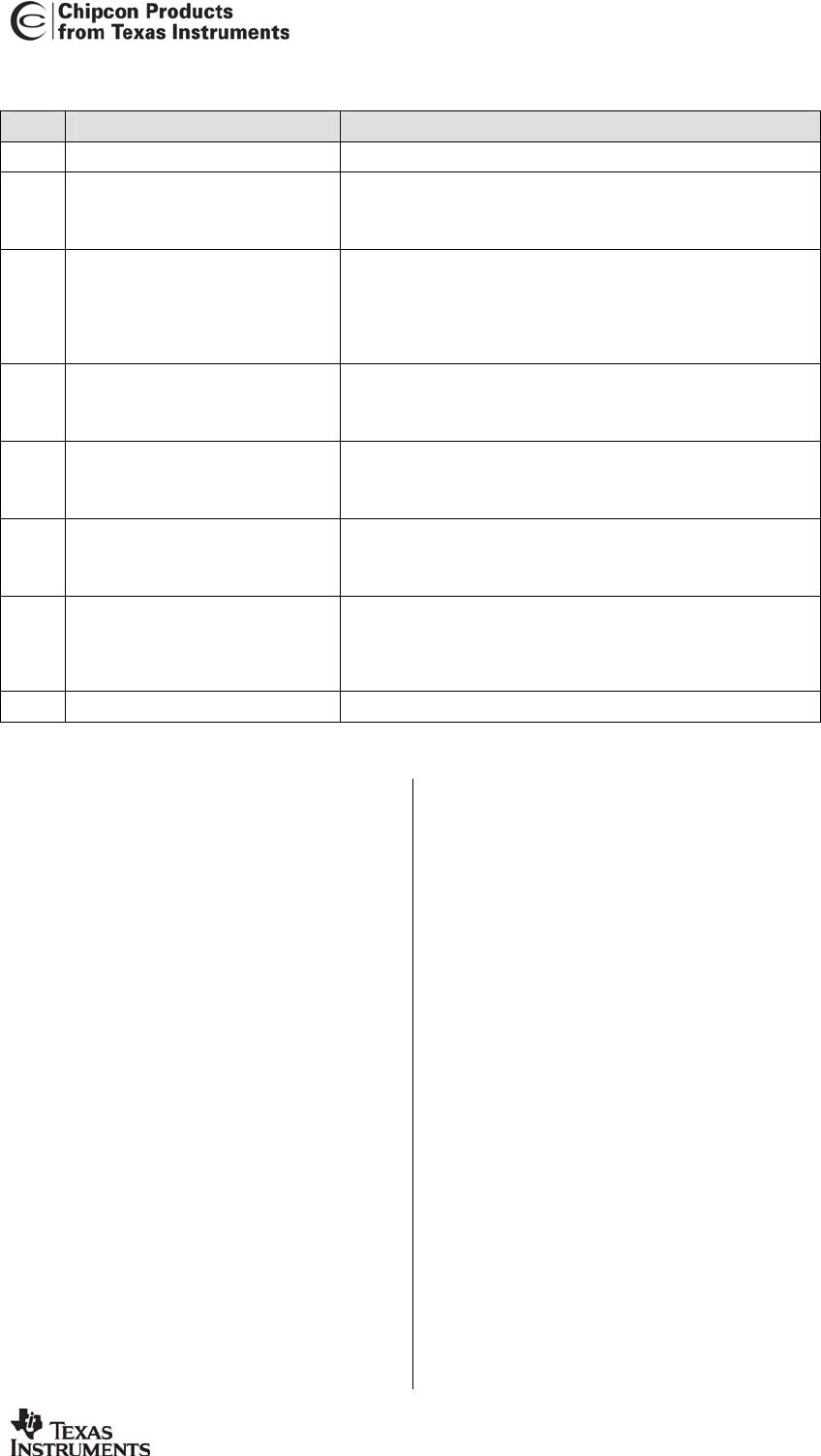
CC2420
SWRS041B Page 29 of 89
Bit # Name Description
7 - Reserved, ignore value
6
XOSC16M_STABLE
Indicates whether the 16 MHz oscillator is running or not
0 : The 16 MHz crystal oscillator is not running
1 : The 16 MHz crystal oscillator is running
5
TX_UNDERFLOW
Indicates whether an FIFO underflow has occurred during
transmission. Must be cleared manually with a SFLUSHTX
command strobe.
0 : No underflow has occurred
1 : An underflow has occurred
4
ENC_BUSY
Indicates whether the encryption module is busy
0 : Encryption module is idle
1 : Encryption module is busy
3
TX_ACTIVE
Indicates whether RF transmission is active
0 : RF Transmission is idle
1 : RF Transmission is active
2
LOCK
Indicates whether the frequency synthesizer PLL is in lock or not
0 : The PLL is out of lock
1 : The PLL is in lock
1
RSSI_VALID
Indicates whether the RSSI value is valid or not.
0 : The RSSI value is not valid
1 : The RSSI value is valid, always true when reception has been
enabled at least 8 symbol periods (128 us)
0 - Reserved, ignore value
Table 5. Status byte returned during address transfer and TXFIFO writing
13.4 Command strobes
Command strobes may be viewed as
single byte instructions to
CC2420
. By
addressing a command strobe register
internal sequences will be started. These
commands must be used to enable the
crystal oscillator, enable receive mode,
start decryption etc. All 15 command
strobes are listed in Table 11 on page 62.
When the crystal oscillator is disabled
(Power Down state in Figure 25 on page
44), only the SXOSCON command strobe
may be used. All other command strobes
will be ignored and will have no effect. The
crystal oscillator must stabilise (see the
XOSC16M_STABLE status bit in Table 5)
before other command strobes are
accepted.
The command strobe register is accessed
in the same way as for a register write
operation, but no data is transferred. That
is, only the RAM/Register bit (set to 0),
R/W bit (set to 0) and the 6 address bits
(in the range 0x00 through 0x0E) are
written. A command strobe may be
followed by any other SPI access without
pulling CSn high, and is executed on the
last falling edge on SCLK.
13.5 RAM access
The internal 368 byte RAM may be
accessed through the SPI interface. Single
or multiple bytes may be read or written
sending the address part (2 bytes) only
once. The address is then automatically
incremented by the
CC2420
hardware for
each new byte. Data is read and written
one byte at a time, unlike register access
where 2 bytes are always required after
each address byte.
The crystal oscillator must be running
when accessing the RAM.
The RAM/Register bit must be set high to
enable RAM access. The 9 bit RAM
address consists of two parts, B1:0 (MSB)
selecting one of the three memory banks
and A6:0 (LSB) selecting the address
within the selected bank. The RAM is


















